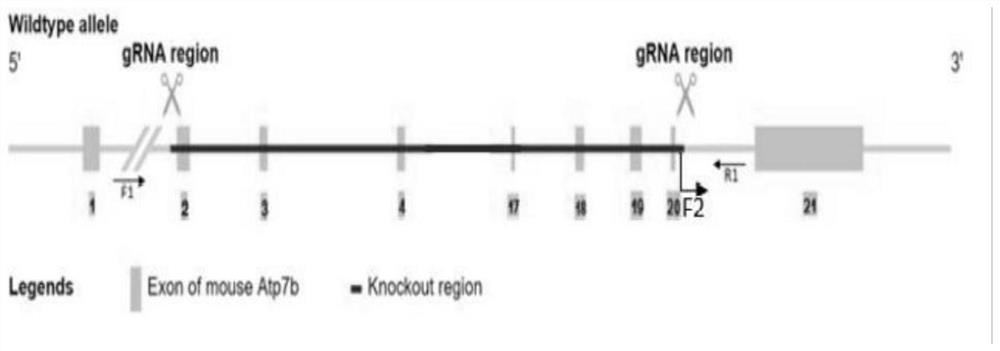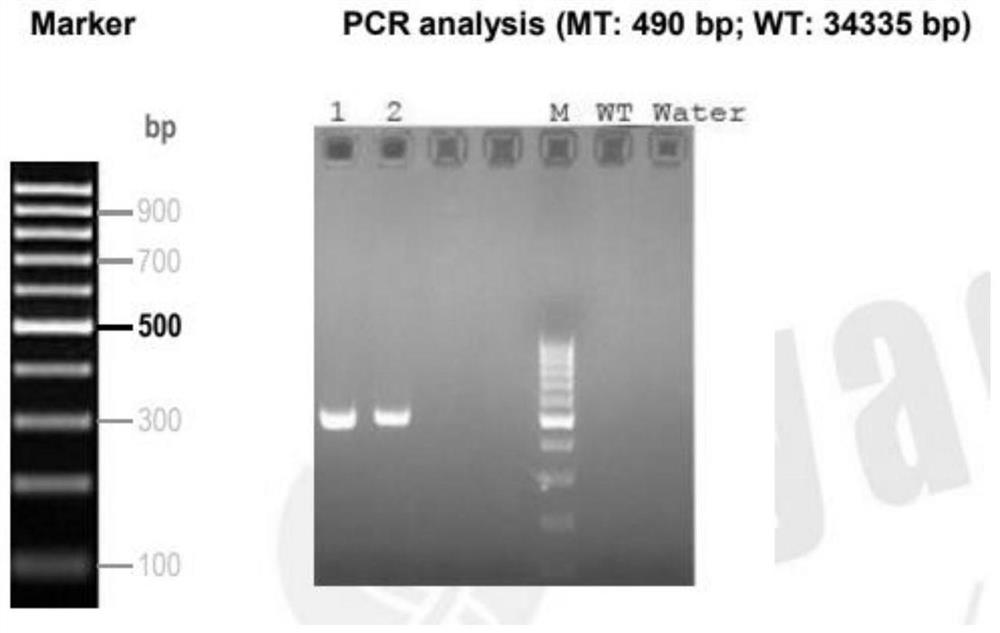gRNA targeting mouse Atp7b gene and method for constructing Wilson disease mouse model
A mouse and targeted technology, applied in the field of molecular biology, can solve the problem of lack of Wilson disease mouse model, and achieve the effect of short cycle and simple method.
- Summary
- Abstract
- Description
- Claims
- Application Information
AI Technical Summary
Problems solved by technology
Method used
Image
Examples
Embodiment
[0037] 1. Knockout protocol design
[0038] According to the requirements, look up the detailed information of the Atp7b gene, select the gene knockout region as much as possible to include the functional domain of the gene, and select the knockout region according to the actual situation, we choose the Atp7b gene knockout region Exon2-Exon20 with a total of 33183bp sequence, including the entire Atp7b gene 91.91% of the coding region, as shown in Figure 1.
[0039] 2. gRNA sequence design
[0040] According to the sequence of the mouse Atp7b gene, three gRNA sequences targeting the gene were designed and synthesized, and the sequence information is as follows:
[0041] gRNA1=SEQ ID NO 1=5'-GGCACCCAGGCCAAATGTAGGGG-3';
[0042] gRNA2=SEQ ID NO 2=5'-GACTCTTACCACTGCTAAGTGGG-3';
[0043] gRNA3 = SEQ ID NO 3 = 5'-TCTTTGCTAAGGAGTAAAACTGG-3'.
[0044] 3. Microinjection of Cas9 / sgRNA
PUM
 Login to View More
Login to View More Abstract
Description
Claims
Application Information
 Login to View More
Login to View More - R&D
- Intellectual Property
- Life Sciences
- Materials
- Tech Scout
- Unparalleled Data Quality
- Higher Quality Content
- 60% Fewer Hallucinations
Browse by: Latest US Patents, China's latest patents, Technical Efficacy Thesaurus, Application Domain, Technology Topic, Popular Technical Reports.
© 2025 PatSnap. All rights reserved.Legal|Privacy policy|Modern Slavery Act Transparency Statement|Sitemap|About US| Contact US: help@patsnap.com



